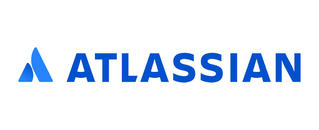
Jun 2019
17 Mon
18 Tue
19 Wed
20 Thu
21 Fri 08:45 AM – 05:40 PM IST
22 Sat 09:00 AM – 05:30 PM IST
23 Sun
##About Rootconf 2019:
The seventh edition of Rootconf is a two-track conference with:
##Topics and schedule:
View full schedule here: https://hasgeek.com/rootconf/2019/schedule
Rootconf 2019 includes talks and Birds of Feather (BOF) sessions on:
##Who should attend Rootconf?
For information about Rootconf and bulk ticket purchases, contact info@hasgeek.com or call 7676332020. Only community sponsorships available.
##Rootconf 2019 sponsors:
#Platinum Sponsor
 |
 |
 |
#Gold Sponsors
 |
 |
 |
#Silver Sponsors
 |
 |
 |
#Bronze Sponsors
 |
 |
 |
 |
 |
 |
#Exhibition Sponsor
 |
 |
 |
#Community Sponsors
 |
 |
 |
Akshay Mathur
@akshaymathur
Submitted Feb 27, 2019
Organizations are moving towards microservice-based architectures across public and private cloud, as well as data centres. As traditional tools are not suitable in containerized environment, there is a need to come up with a new-generation load balancing solution with the ability to address the following pain points:
In this session, we will discuss both the technical challenges in Kubernetes environment, as well as certain business challenges faced by enterprises while moving to Kubernetes.
Following is the detailed list of challenges to be covered in the session:
A. Technical Challenges for organizations deploying applications in Kubernetes:
Although Kubernetes addresses challenges relating to application build and deployment, organizations still face the tough and often time-consuming challenge of reliably delivering runtime security and performance assurance in containerized microservices environments. It is also important to note that this issue will only become more complex as organisations grow in scale and data.
B. Business Challenges faced by enterprises
With the overwhelming amounts of data being handled by organisations, it makes sense to use a centralized policy management tool. There also exists the need for comprehensive metrics, logs and analytics to provide actionable insights for each microservice. The goal of these analytics is to provide end-to-end transaction response time, throughput, request rate, and other real-time and historical metrics. But, in the process of adopting a solution to tackle these problems, the following issues need resolution.
C. Market Education Challenges in the industry
As the wave of digital transformation takes over every aspect of businesses, organizations are turning to containers for their production applications to become agile and scalable in meeting digital demands that they face. In this journey, what cannot be compromised is the security for both modern multi-cloud and traditional infrastructure.
The approach to tackle all these challenges in one go is selecting a tool for applications deployed in Kubernetes environment, that provides teams deploying microservices applications with an easy, automated way to integrate enterprise-grade security and load-balancing with comprehensive application visibility and analytics – all without changing application code or deployment architecture – and also suites to the use case.
N/A
Akshay Mathur serves as Senior Product Manager at A10 Networks. His two-decade experience spans in both technical as well as business sides and in various domains, including wi-fi security, social networking, online retail, cloud applications and application delivery. He is a startup enthusiast and have been founding team member of multiple companies. He loves blogging and teaching on technical as well as non-technical topics via meetups and other platforms.
{{ gettext('Login to leave a comment') }}
{{ gettext('Post a comment…') }}{{ errorMsg }}
{{ gettext('No comments posted yet') }}